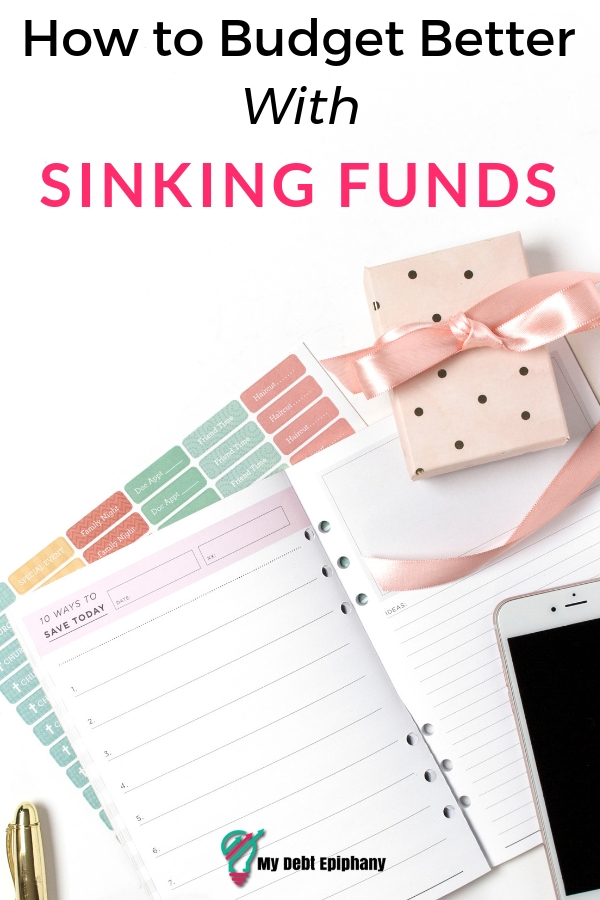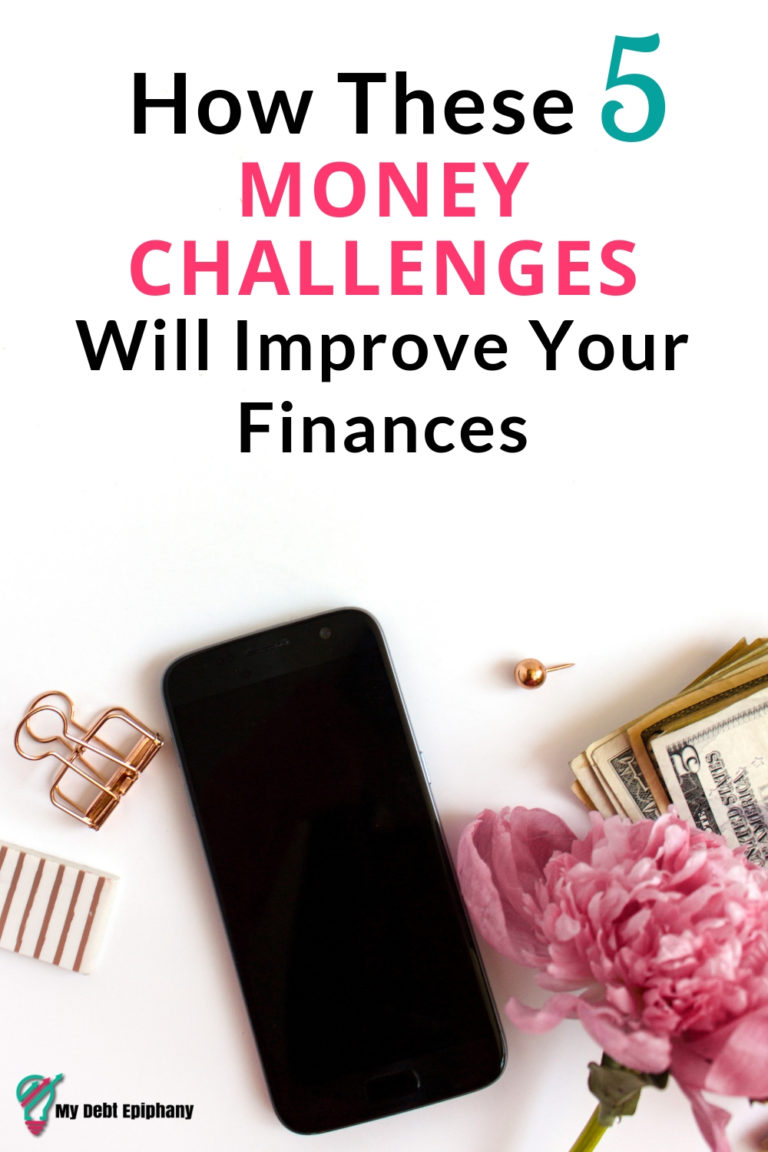What Are Sinking Funds and How to Use Them
A kitchen renovation. A new car. A trip of a lifetime. What do these things have in common? They are all commonly listed goals that are considered something to save for.
When it comes to the larger things in life, whether it be an event (i.e. Christmas), an item (a new furnace) or an experience (deep sea diving off the coast of the Maldives) there are different ways to save so you can check it of your list successfully.
One unique way to save up for what you need is to sink down into the benefits of a sinking fund. Read on to learn the ins and outs of this amazing fund and how it can benefit you and your specific goals.
What Is A Sinking Fund and Why Is It Important?
If you’re wondering just what a sinking fund is, you’re likely not alone. While the name sounds like a negative financial vehicle it is actually the very opposite in this case.
A sinking fund is an account that you put a fixed amount of money into for a predetermined amount of time. This means that you are putting your money, or sinking it, into a fund that will be used for your specific goal when the period of saving time is complete.
This is a great savings strategy as it:
- Eases the burden of having to produce large sums of money all at once
- Promotes the healthy habit of saving
- Helps you utilize the awesome power of budgeting
- Creates guilt-free spending on larger purchases
A sinking fund is important to have to ensure that all of your goals are met without having to dip into your savings or wrack up debt for major expenses that could have been planned for in advance.
Diving Deeper Into Sinking Funds
Now that you see the benefits of having such a fund, there are other interesting parts to it that will help you determine which one(s) to set up for your specific financial needs.
Common Categories and How Many Sinking Funds To Have
There are common reasons sinking funds are opened. The most popular categories are:
- Car fund (saving for a car, car payments, car expenses including annual car registration fee, insurance fees, etc.)
- Home fund (saving for a house, moving expenses, monthly utilities, renovations, etc.)
- Travel fund (accommodations, flight, paid experiences, travel insurance, etc.)
- Holiday and gift fund (Christmas, birthdays, annual BBQ’s, bar and bat mitzvahs, Halloween, etc.)
- Medical fund (saving for insurance payments, medications, surgeries, etc.)
- Children fund (tuition payments, activities, toys, clothing, food, etc.)
While separating all of your financial goals into different sinking funds may seem like a great idea, it can become overwhelming and confusing to have so many on the go. When deciding which sinking funds to open, ask yourself:
- Is this a necessary fund to open?
- Would maintaining this fund be overwhelming for me?
- Can I reach this goal in another efficient manner?
Keep in mind: sinking funds are best for large expense planning, while day-to-day unplanned expenses are perfect reasons to use your emergency fund.
How Does It Work?
A sinking fund sets you up for success by ensuring that you save in advance of the disaster striking, the opportunity being missed or the bucket list collecting dust.
For example, maybe you intend to take a well-deserved trip in 6 months time. Rather than doing lump sum payments on your credit card that wasn’t planned for and thereby creating a hitch in your finances, break it down with a sinking fund. If your trip cost $1,200, you could save $200 for per month for 6 months in advance of booking your travels.
Another great option when you save is to split the amount you save per month into the different categories that you’re saving for. For example, if you save $500 per month normally, you could split that into different amounts for your goals such as $100 for vacation, $100 for medical expenses, $100 for car expenses, $100 for home expenses, $50 for gifts and $50 children’s fund.
A sinking fund is so versatile and can be used to save for anything and everything you can possibly think of!
Where To Hold Your Sinking Fund
There are several places you can place your sinking fund as you build it!
Depending on your sinking fund term length, the type of fund vehicle can vary. For example, if you are saving for a home and you don’t need the money right away, you could save your money in a less liquid option such as stocks or mutual funds.
With that said, there are amazing high-interest savings accounts that are flexible and provide steady interest that is higher than what your classic bank account offers. These are also easily accessible so they are perfect for your goals that would require the money quickly from the fund account.
If simplicity is key for you the cash envelopes system is also a great option. For account options, look into Capital One 360 and this list of other high-interest savings accounts.

Savings Vs. Sinking: The Difference Between These Funds
So you may be thinking that there isn’t a difference between savings and sinking funds but hold onto that thought.
A savings account is designed to build wealth for the long term and work for you as time goes on. It isn’t mean to be dipped into regularly. A sinking fund is created specifically to be spent as it is intended for your planned expense, not for net worth building.
These are key points to keep in mind when deciding between opening a savings or sinking fund.
As you continue to work towards your goals with the help of sinking funds, be sure to check out these highly informative posts that will support your financial journey with these unique funds:
How I’m Preparing For Holiday Expenses
Emergency Fund Tips: How to Grow Your Account Fast and Where To Start
How to Save Your First $1,000 This Year
The Ultimate Guide To Budgeting
Emergency funds are also important to have and compliment sinking funds. I know how tough it can be to fill your emergency fund but over time I learned amazing techniques on how to do just that. To help you build an emergency fund, I’ve put together a 4 part masterclass called ‘Build A Full Emergency Fund…FAST’ and it’s dedicated to all things emergency fund! We’ll dive into all the areas needed to get your emergency fund to where you want it to be fast.
We’ll discuss things such as your personal ‘why’ for building a full emergency fund, what you should and shouldn’t use emergency savings for, how many months of expenses you should set aside for your own personal situation and SO much more. I am also including great bonuses that will help you beyond the masterclass. Join the masterclass here!
How do you or would you use sinking funds? How has it helped you with your unique financial goals? What advice do you have on the topic?
Stop Worrying About Money and Regain Control

Join 5,000+ others to get access to free printables to help you manage your monthly bills, reduce expenses, pay off debt, and more. Receive just two emails per month with exclusive content to help you on your journey.





